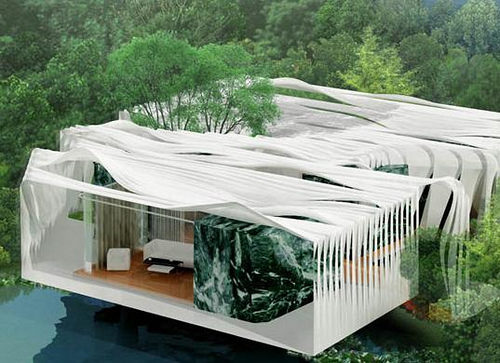Sustainable architectural design utilizes environmentally conscious design techniques and mainly focuses on protecting the natural reserves while focusing on saving energy. In another way, we can define that sustainable architectural design is meant to reduce negative environmental impacts of building by reducing the usage of materials, energy and developmental spaces and thereby enhancing efficiency, so that it wouldn’t affect our future generations negatively.
Sustainable energy use
Energy efficiency and usage are an important element for a sustainable architectural design. An architect planning to build an energy efficient home or an office building has to keenly focus on how to use maximum energy with minimal wastage. In order to be cost-effective in means of heating, ventilating and air conditioning, it is important to focus on insulating the building. Anaerobic digesters are also made to reuse energy. Solar panels, wind turbines, solar water heating, heat pumps can be used in the construction of a green building as they are renewable energy resources.

Sustainable building materials
Sustainable building materials include fibre glass, harvested wood, clay, bamboo, baked earth clay etc. These are lower volatile organic compounds, recycled materials that help in protecting the environment while also reducing the costs of construction. Whatever material used must be of standard and certified as green or eco-friendly. These building materials play a vital role in sustainable architectural design.
Sustainable building consulting
A sustainable consultant must be always precise in design processes to forecast the implications of constructions, orientation, glazing, and other physical factors for the perfect design.
Wastage management
Waste may be both used materials and useless materials generated from households, business, constructions, and while the demolition process and also from the agricultural industry. They can be municipal solid waste, construction and demolition debris, industrial or agricultural by-products. There are provisions made for reuse of wastes, gray water system, off site recycling, waste packaging and food composting.
Building placement
Building placement is an important thing while thinking about architectural design. The building must not be placed in an isolated area, as they result in large wasting of energy like for transportation. So the energy saving buildings should be designed in such a way that they should be both environmentally friendly while also saving the costs incurred in building a sustainable architectural design.

COMMENTS